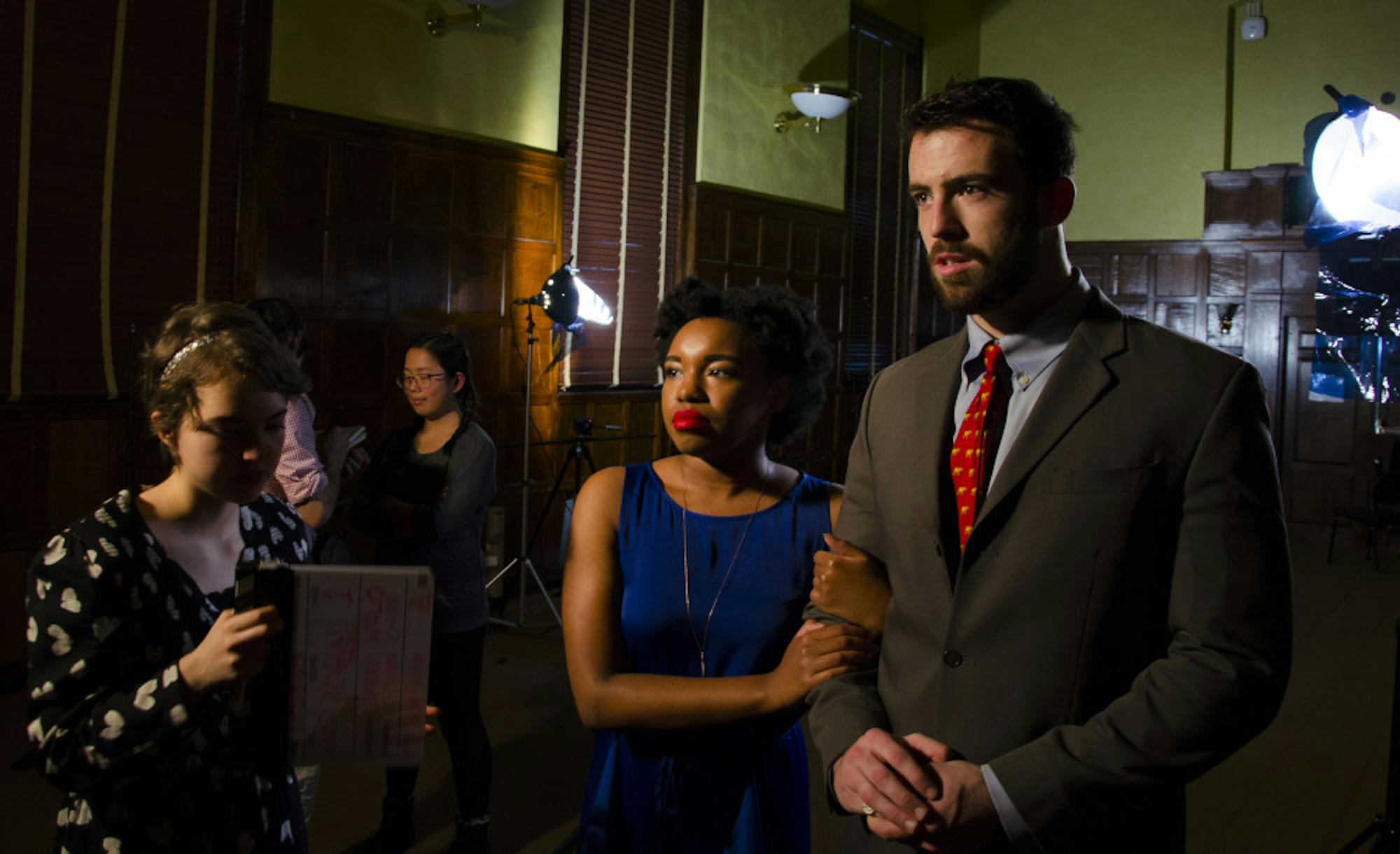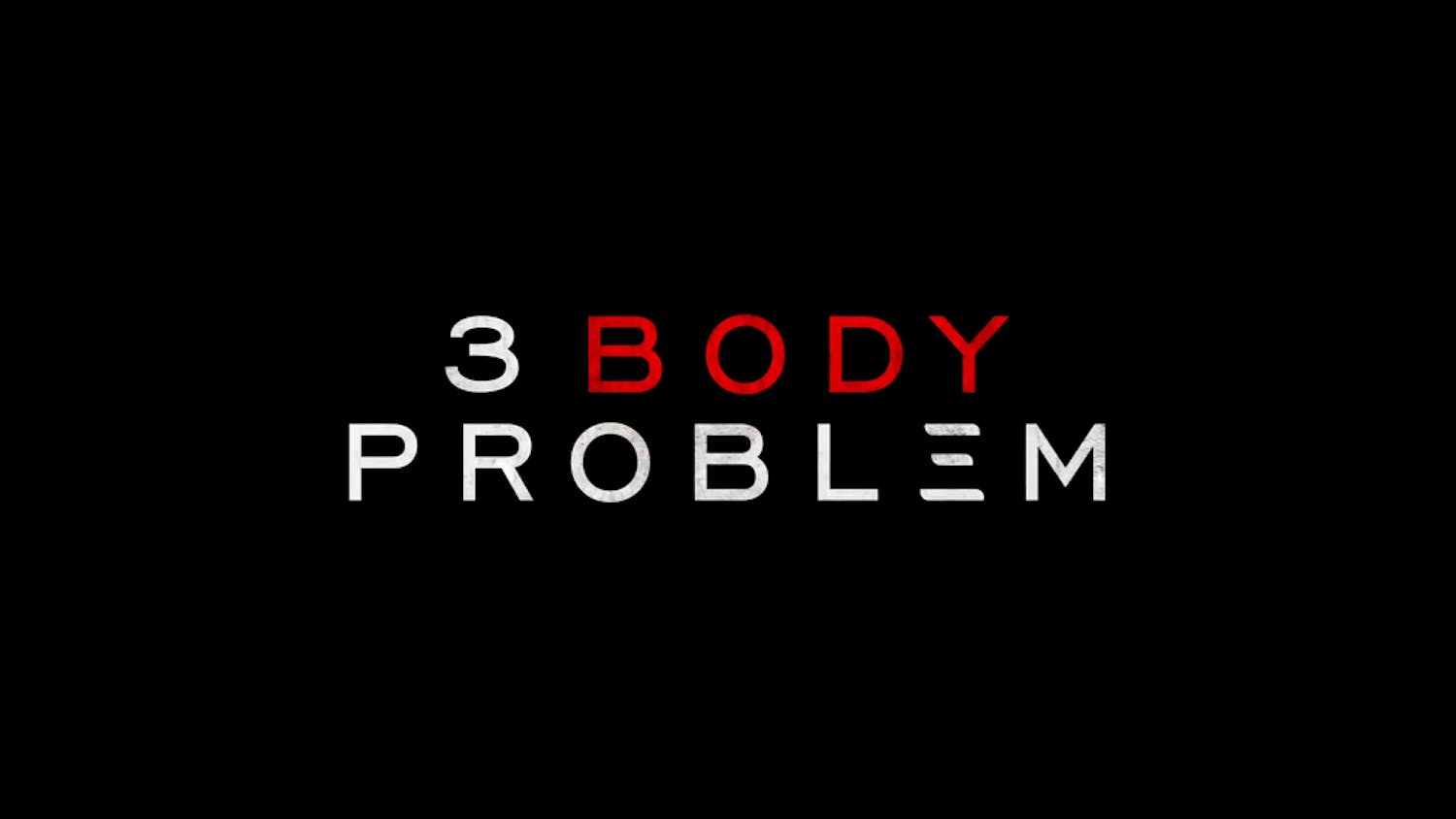Monday marked the long-awaited release of “Legend” (2017), Tufts University Television's (TUTV) latest and largest-ever project. All eight episodes of the web series, which reimagine the characters of the medieval legends of Arthurian Britain as modern-day students at Camelot University, became available to stream on YouTube on Monday morning.
For senior Kristin Tomecek, the writer-creator of “Legend,” it was the completion of a two-year-long quest to adapt her vision to the screen. Tomecek, lead actor Peter MacCarthy and composer Stephanie Evans have made it clear that their their mindset was anything but complacent.
MacCarthy, a senior, said the team has been making a large effort to publicize their work over social media.
“You can like our Facebook page. [And] we’re [writing] a Buzzfeed article — share it on social media, email your mom,” Tomecek added.
Though all three were feverishly promoting “Legend” both on and off campus for all of last week, the real heavy lifting had already happened during the previous two years of shooting, writing, editing, music and sound work since Tomecek first pitched the show in the fall of 2015. Tomecek now points to the growth of TUTV as a whole since she first got involved as a first-year in making such a large-scale production possible.
“This is one of TUTV’s most ambitious projects,” she said. “In my first semester freshman year, I took a class on writing short films. There were two seniors who were the heads of TUTV, and they told me, 'You should join our club.’”
The rest, as she tells it, is history.
“By the end of the year, I was art directing for them, and I’ve been involved in every major TUTV production since,” Tomecek said.
The idea for "Legend" was born out of Tomecek's creative frustration.
“I was lamenting the loss of an idea I had for another show that was picked up by The CW,” she said. “I was writing all these characters and storylines and Googling, and [then] I saw that someone else had this idea first.”
Defeated, she took to her bed. Serendipitously, her best friend soon entered the room with a copy of “The Once and Future King” (1958) by T. H. White. Tomecek, a lifelong fan of medieval tales and sagas, read the book and immediately felt an idea brewing.
“Legend” quickly became a chance for Tomecek and the other creative minds behind the project to find a new setting in which to tell the centuries-old tales of King Arthur (MacCarthy), the knights of the round table and their contemporaries. It also presented an opportunity to make the legends more encompassing of people and groups whose stories had been ignored in the past.
“One of the things that drew me to this content was this unique chance to reclaim all of these old narratives and celebrate them, but also update them in a way that places them in a modern context,” Tomecek said.
To this end, she strove from the beginning to include fresh voices in addition to well-worn ones in the interest of creating the most complete storyline.
“You watch 'Lord of the Rings' and wish there were a person of color or that the women would stand up for themselves,” she said. “‘Legend’ was the chance for the wizard to be a woman and science to be her magic, and for a knight to be a person of color.”
After formulating her initial pitch, Tomecek started work on the project in October 2015. As she began to form her creative team, the ambitious scope of “Legend” began to take shape, which partially stemmed from Tomecek and Evans’ decision to include a full orchestral score, a first for a TUTV production.
Evans became involved with “Legend” in the early stages of pre-production. As in Tomecek’s case, the medieval storylines piqued Evans’ interest.
“Musically speaking, I took sounds from the Arthurian period — a medieval kind of sound — and turned it into a modern sound with modern instruments,” she said.
The project represented a dynamic test of her ability as a music major because of its demand for Middle-Age sound with technology-age instruments, beats and theories.
“Instead of using older instruments like lutes, I decided to use older tonalities and harmonies that were still accessible to a modern audience. Musically, that was a really exciting challenge," Evans said.
She also enjoyed flexing her creative muscles to track the many shifts in the show’s tone.
“I try to get in the minds of those characters and make the music as serious as what they’re feeling, but also relish in how melodramatic that is,” Evans said.
The long production and large scale of “Legend” made it very collaborative in nature, which Tomecek feels makes it even truer to its Arthurian source material.
“[The] Arthurian legend has no singular author, but it’s been explored through romantic poetry, novels and blockbuster films,” she said.
The opportunity to add a new adaptation of the timeless legend became a far-reaching effort both on and off the Tufts campus.
“As the showrunner, I really wanted to make this a unique experience for the Tufts creative community as a whole,” Tomecek said. “I wanted to bring all these different groups together.”
On-campus organizations from the women’s fencing team to the Zeta Beta Tau fraternity all had a hand in the production of “Legend.” The collaboration with the women’s fencing team in particular was a highlight of production for both Tomecek and MacCarthy.
“One of the things I was inspired by was that scene in “The Parent Trap” where they have a fencing duel,” Tomecek explained through laughs. “I was just thinking, ‘I want to make that.’”
In keeping with the modern context of “Legend,” MacCarthy and Tomecek worked together to update the image and perception of Arthur, particularly in relation to the concept of toxic masculinity.
“Arthur is a little bit of an antihero,” Tomecek said.
Accordingly, MacCarthy noted that he was especially conscious of the implications of the web series format for his portrayal of Arthur.
“It’s so much about [being contemporary], but then the characters are all about these very old themes, like power dynamics and human relations, and how the context for it has changed,” MacCarthy said.
Despite the morally ambiguous view the creators have taken toward the traditional heroes of “Legend,” the show is not solely a straight-laced drama. Beyond the power struggles of MacCarthy’s Arthur, Tomecek was eager to highlight the show’s humorous elements as well.
“The drama is the overarching blueprint for the series, but throughout we do have a B-plotline, which is a Monty Python spoof, basically, with those characters traipsing about campus,” she said.
Beneath all the technical considerations and collaborative nature of the show, however, “Legend” seeks to tell genuine human stories.
“It’s very personality driven, and I think a lot of the conflict of the show comes from the politics of interaction rather than large-scale, en masse ideological politics,” MacCarthy said. “It’s about who we value as characters.”
Weekender: TUTV's 'Legend' is centuries in the making

Student actors in the process of filming the show “Legend” (2017), Tuft University Television’s (TUTV) latest and largest-ever project," are pictured.





